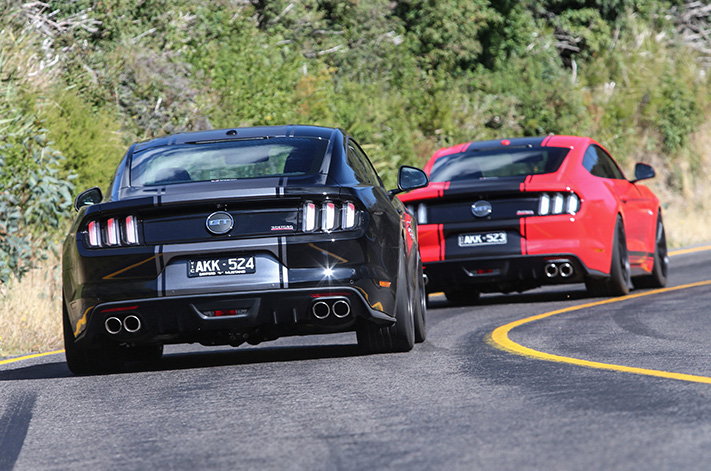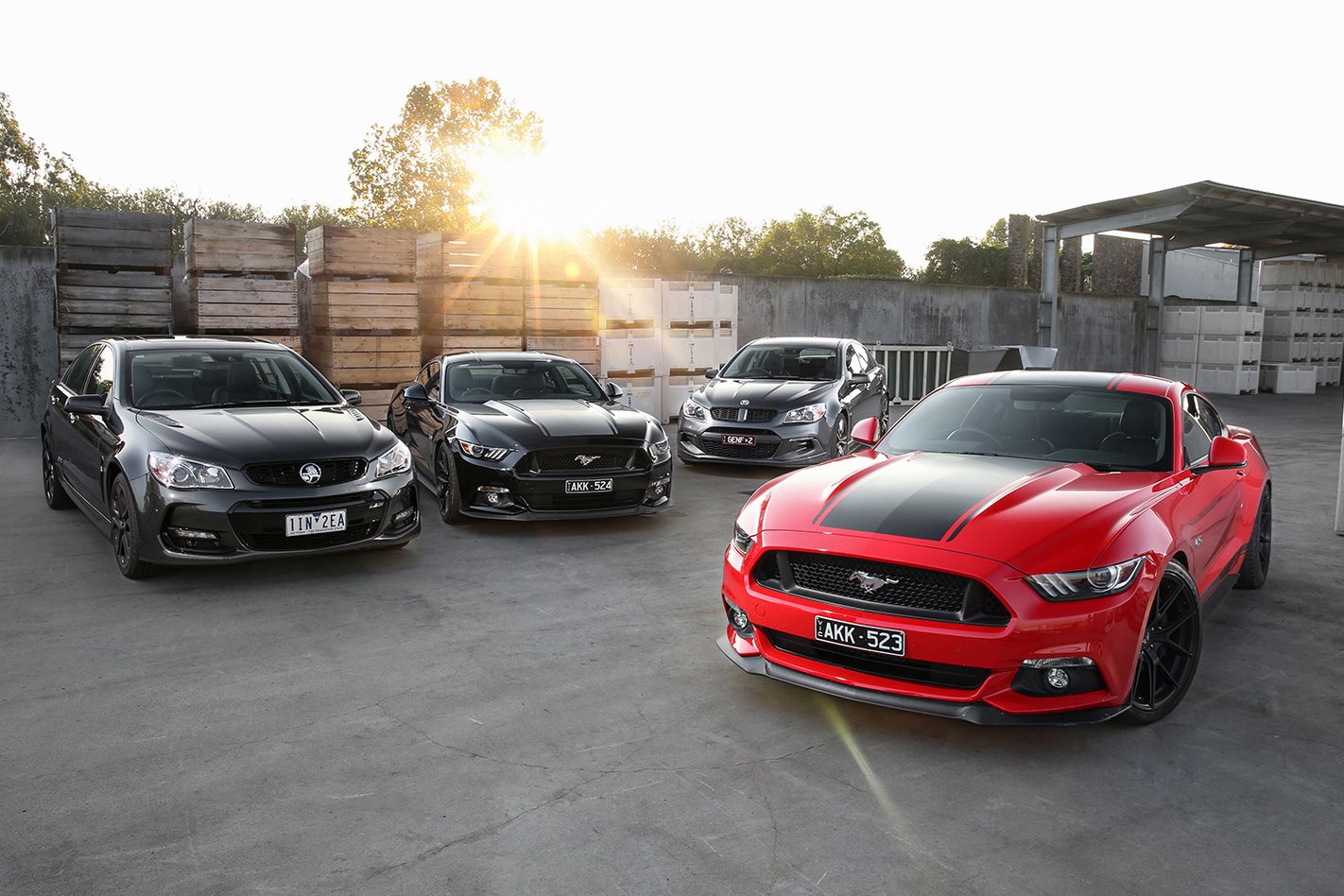WHO KNEW that comparing apples and oranges could be this much fun?
First published in the June 2017 issue of Wheels Magazine, Australia’s most experienced and most trusted car magazine since 1953.
The brief was to gather Tickford’s breathed-on Mustangs and see how they stacked up against more familiar home-grown fare from Holden and HSV.
For this fleeting snapshot in time, Aussie buyers can back-to-back blue-collar right-hand drive V8s from opposite sides of the Pacific. It was an opportunity too good to pass up, fruit analogy notwithstanding, and with a combined 1574kW of the good stuff split between them, drawing some sort of conclusion from this melee was never going to be a genteel discussion.
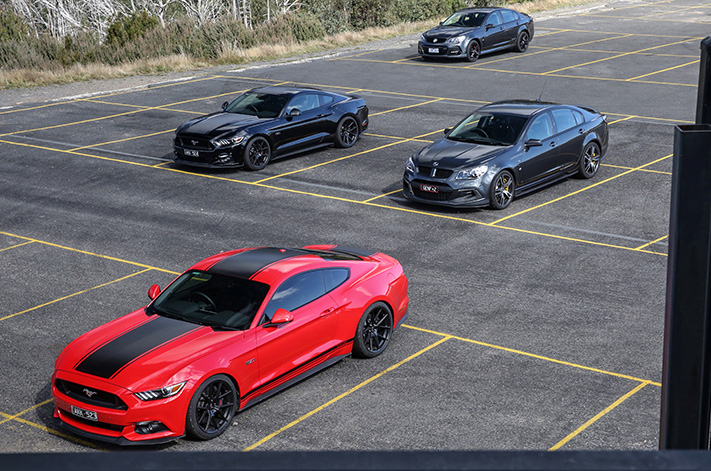
The 304kW Commodore SS-V Redline’s sales proposition is easy to identify. It’s the cheapest car here and in terms of metal for your money, this is the default pick. If you’re cash strapped, read no further. At $54,490 in this manual guise it’s ceding a fat wodge of grunt to the Tickford Mustang Power Pack 360, which takes the standard GT’s 306kW and adds another 54kW. That seems a hefty amount for an exhaust, cold air intake, throttle body spacer and ECU tweak. Pricing for the engine work alone will set you back $6990 over the standard Mustang GT’s $54,990 list.
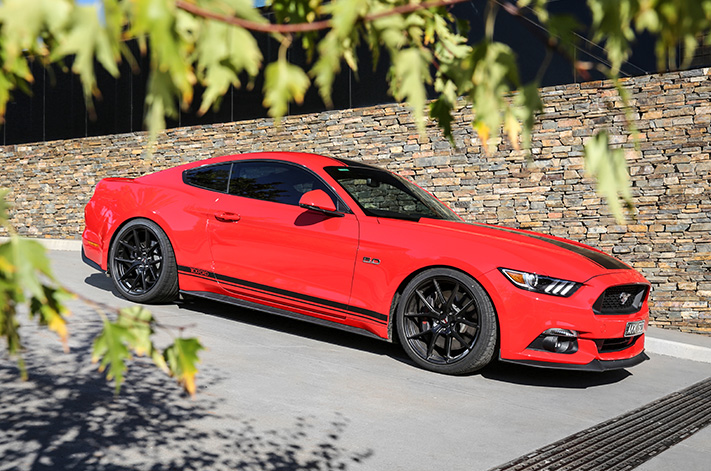
To keep the Clayton hellion on its toes is Tickford’s supercharged Mustang offering. All 500kW of it. This car is still a development work in progress and fills a void created by Ford Australia’s aim of selling a factory-warranted Roush supercharged car falling foul of Australian Design Rules.
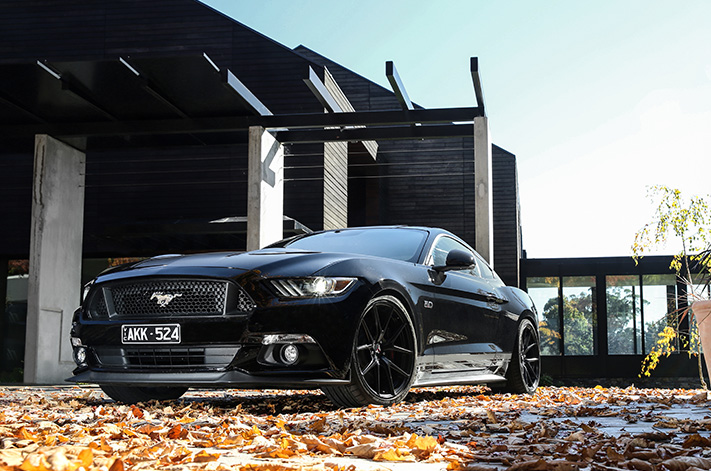
THERE’S no lake and not really much of a mountain at Lake Mountain. What there is makes the early start from Melbourne well worth the suburban schlep. With the holiday crowds gone, there’s a snaking road to nowhere, nothing open at the end of it and nobody to object to any perky driving.
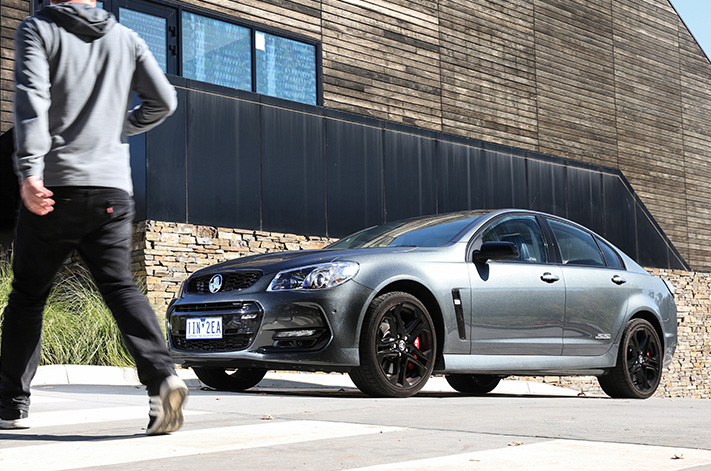
The chassis is decently tied down in extremis and has just enough reassurance about its pitch and roll axes to let you know exactly how hard it’s working the tyre contact patches.
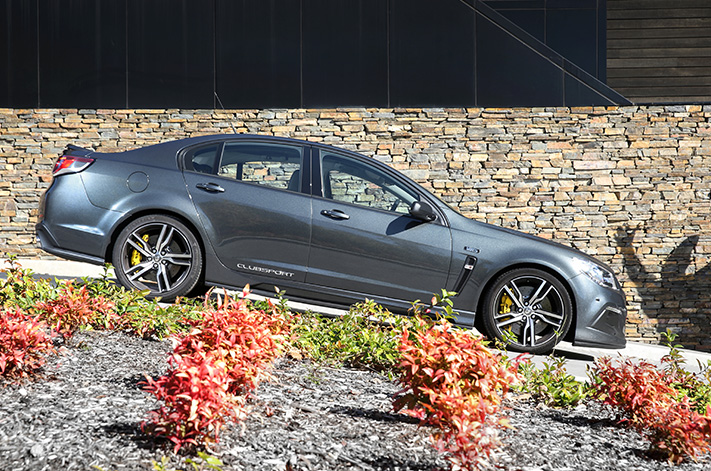
You need to dial 4000rpm onto the clock to really get the 6.2-litre lump into its stride and while the LS3 has never been an inherently musical engine, the in-cabin note is purposeful enough, largely thanks to that cheap but effective Baillie Tip exhaust. The pedals are beautifully positioned for heel and toeing down through the gears and the brake pedal feel and progression is about as good as it gets, in this class at least. What’s not so great is visibility through tighter corners, the big-boned A-pillars capable of hiding an oncoming B-double.
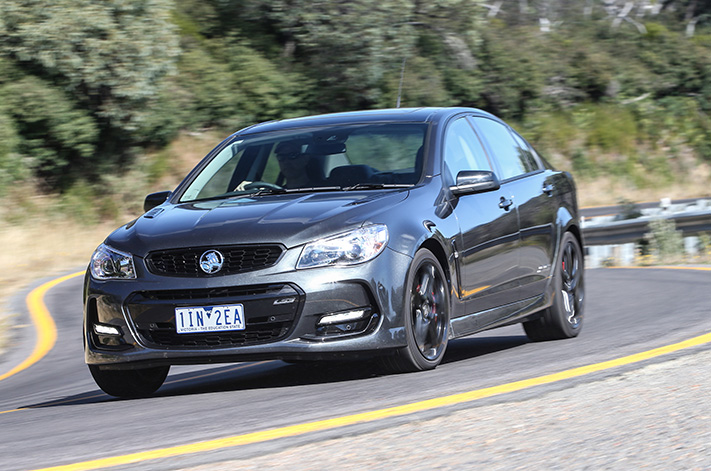
It’s hard to argue with the way the SS-V – a vehicle with a bigger footprint than a millennial BMW 7 Series – demolishes a set of switchbacks, though. The front end is just mighty, the 19-inch Bridgestones doggedly keying into the scabby blacktop, helped by the benign long-travel brake and accelerator affording the rubber every chance to weasel out any residual adhesion. A consequence of that travel is that you need to really commit to big braking, something that can lead to a heart-in-mouth moment if you’ve stepped from something a little more overservoed. Something like a Mustang with the Tickford 360 Power Pack, for example.
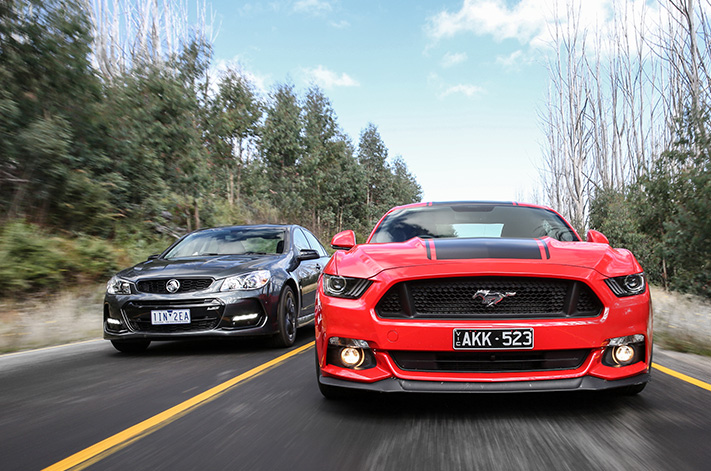
Get the Mustang onto a more consistent surface and it feels special. The body control is sharper than the Commodore’s, turn-in is more incisive and throttle mapping far more aggressive. It feels like a supersized Toyota 86 until you try to drift it like a Hachi-roku, whereupon you find that the neurotic throttle response requires equally rapid hands.
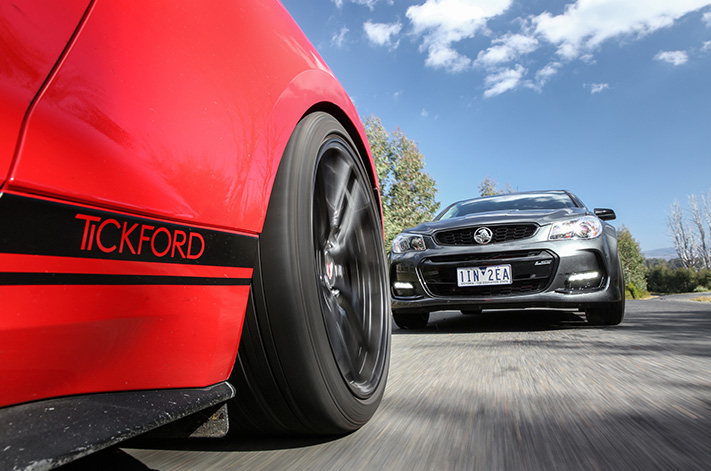
This car also wears a Tickford wheel and tyre set, featuring 10-spoke satin black alloys and staggered width 20-inch Dunlop SP Sport Maxx GT tyres. With tyre pressure sensors, locking wheel nuts, fitting and balancing, that’s going to leave you a McDonald’s meal’s worth of change from $4500. Then there’s the Tickford sports suspension that lowers ride height by 25mm for that great hunkered-on-its-rubber look, but which could use a little more gradation in compression damping.
The tyres tramline more on city streets than the Holden’s slimmer 19-inch hoops, sniffing out and nibbling at any minuscule contour in the surface. The engine requires a few more revs on the board than the Redline, getting into its stride at 4500rpm, so you need to be a bit more diligent with gear selection when attacking a tight corner. The pedal box isn’t as well set up as the Holden either but the steering feels far meatier, the front end even more tenacious and the brakes feistier, although it requires a more measured pedal application.
The Mustang also sounds much more aggressive on the way out. What it doesn’t feel is a lot faster, something that our performance data attests to. The Tickford doesn’t get its snout in front until 160km/h, and there’s a mere tenth of a second between the two cars to 400m. For a car with a 56kW power advantage and which is hefting 80-odd kilos less timber up the strip, we’d have expected a wider gap. Time to see if some forced induction can open up a wider advantage.
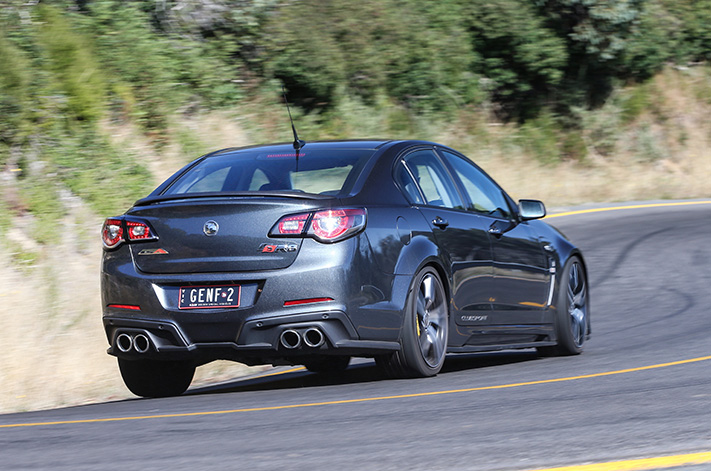
Parked next to the Redline, the HSV looks enormous, the bulkier chin and butt mouldings, lower ride height and more pronounced lateral lines making it look half a class bigger. It’s not a car that shrinks around you on a tight road either, but it’s astonishingly lithe for such a hefty unit. The torque vectoring helps here, although that requires some fairly focused throttle commitment to generate that degree or two of yaw to fire you out of a corner in vaguely the right direction.
The front end takes longer to trust than in the Redline, largely due to the stiffer sidewall hysteresis of the OE fit Continental ContiSportContact 5P tyres, which grip harder but are a little more taciturn than the Holden’s malleable Bridgestones.
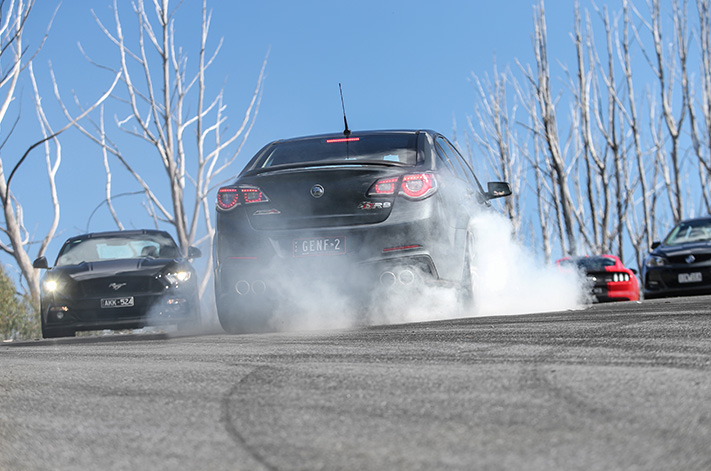
Most of the time it’s still a better fit for the Clubbie than the Tremec manual, but that denial of downshifts as you lean on the brakes into a corner can be frustrating. After a while you give up on pinging the paddles and see if the software can make a better fist of things, which often feels – and sounds – clumsy. The Clubsport promises real potency, but it can be caught surprisingly off guard for a supercharged car. Peak torque is at 4200rpm and peak power a heady 6150rpm.
The net result of this is that it feels more significantly less linear in its power delivery than you might expect. The flipside of this is that it’s endowed with a surge to the redline that’s laugh-out-loud hysterical. I haven’t heard such a manic shriek since Uncle Martin snagged his scrotum in a split plastic sun lounger while on holiday in Milford-on-Sea. For a car that’s so refined at cruising speeds, this unhinged duality of personality sets the HSV apart.
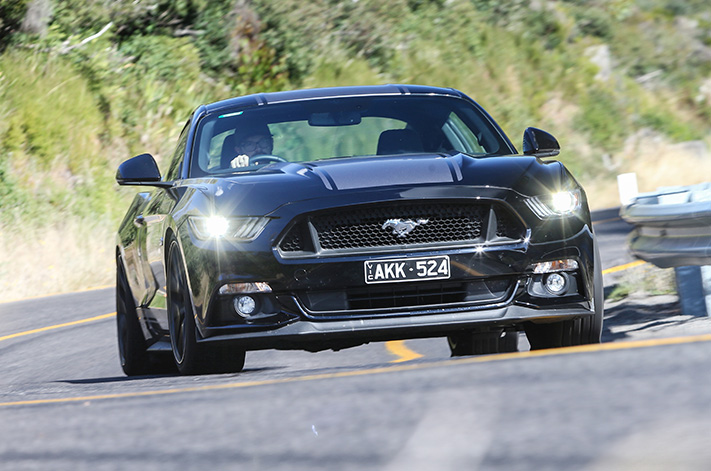
Nothing can really live with the black car up here. Full throttle is something you need to work up to, and keeping the throttle pinned for even a handful of seconds sends a raucous caterwauling howl across the valley, overlaid by the shrill keening of the supercharger. It’s hilariously traction-limited, notching the sprint to 100km/h only four-tenths quicker than its naturally aspirated sibling, but it reaches 200km/h fully five seconds ahead. We don’t have many roads that really do this car justice.
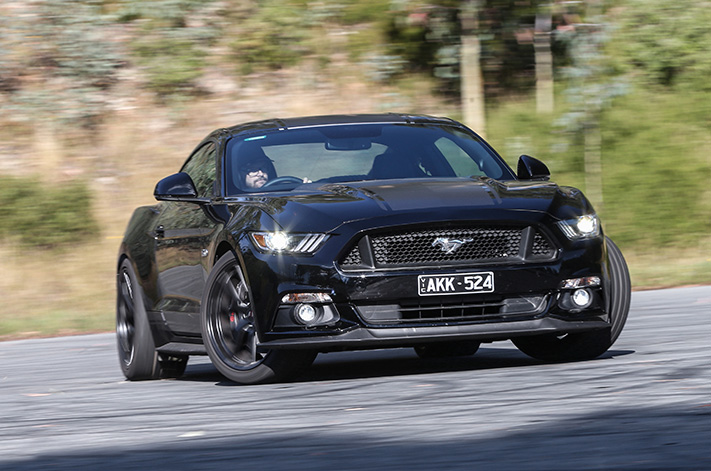
If you absolutely must win traffic light drags, then a Mustang probably isn’t the best car for you anyway. It’s a sorry realisation that more often than not, you’ll be blitzed by an A45 AMG.
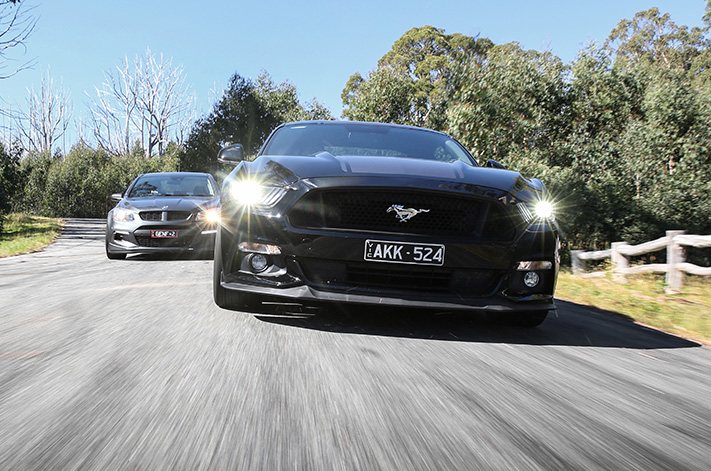
The HSV Clubsport R8 LSA is endowed with far more bandwidth. It can do grey Monday morning commutes as happily as it’ll tackle a track day at Phillip Island. It’s hard to knock the value proposition, the Clubbie having been worked into a hugely impressive all-rounder. It’s too big for its own good as a sporting car and that places huge demands on consumables like tyres and brakes but otherwise grumbling feels churlish.

The car that everybody said they’d buy if they were spending their own money was the unassuming SS-V Redline. That’s as good as a winning definition as you’re likely to get and it’s rare that the slowest and least extrovert car of the bunch will win the popular vote. We don’t subscribe to the ‘everybody gets a medal’ school of thought here at Wheels, but these are four very worthy performance cars. The Commodore just gets more right more often, and for less money than any of the others, and that’s testament to the experience in local tuning. It’s no surprise that the best car I’ve driven on a British B-road is a Lotus Elise, the best car to tackle a French autoroute is a big, soft Peugeot wagon, and the finest autobahn weapon I’ve sampled is a Mercedes-Benz S65 AMG. For covering kilometres in Australia, the SS-V just flat-out works.
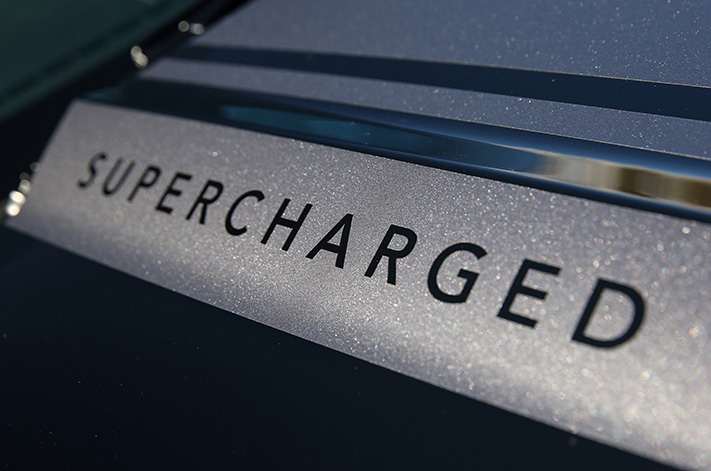
Setting aside old allegiances? That might take a bit longer.
